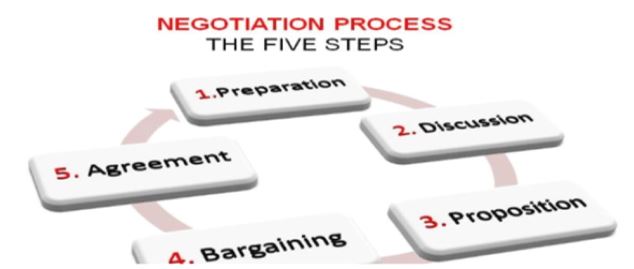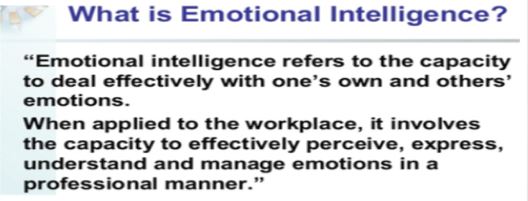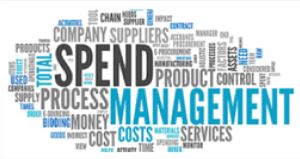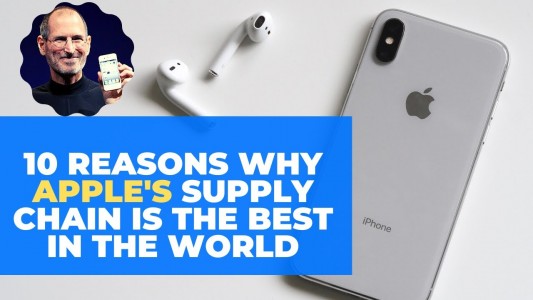There is fascinating correlation between your Negotiation and long term success of an Organization. In some jobs, the human touch and essence is essential. In others, it seems to be a drawback, and in a field of supply chain it boils down to a thin line of human emotions and business objectives and hitting the optimum tune is a serious task.
Some of the greatest success stories were fueled by robust& accurate negotiations.
Well, before we enter into what may be a robust strategy to negotiate to ensure certain tangible and intangible benefits, it is highly important to understand the true meaning of Contract, negotiation and strategy independently.

What is a Contract?
A contract is a legally binding or valid agreement between two parties. It is only obligatory if the agreement contains below fundamentals:
- offer and acceptance;
- an intention between the parties to create binding relations;
- consideration to be paid for the promise made;
- legal capacity of the parties to act;
- Legality of the agreement.

What is Negotiation?
One of my favorite elements at the round table includes negotiation. The ability to negotiate powers numerous business outcomes. We negotiate for our existence, in our jobs, compensation and growth, with stakeholders, we negotiate in our personal lives as welland if you’re in a field like Procurement/Supply Chain, negotiation is inevitable.In a competitive environment it is critical to your success. Negotiation without intend can handicap your business goals.

Why Negotiate?
Negotiation is a bridge by which differences are settled. It is a process by which mutually accepted solution is reached while avoiding incomplete business deals.
In any difference, business’s aim to achieve the best possible ending for their situation. However, the objectivity of being just, pursuing mutual benefit and developing a relationship are the keys to a successful negotiation.
Stages of Negotiation:

What is Strategy
The term strategy has been getting the center stage for many years in a row with various corporate leaders and research institutions, yet, there is no decisive definition.

Major reason being different organization’s/people echo different views about most acceptable definition of strategy.
For instance, for some people it is a method of evaluating the forthcoming to safeguard against the uncertainties of the future, accordingly plan your present and develop a roadmap to march on it according to designed blueprint.
According to Gerry Johnson and Kevan Scholes, authors of “Exploring Corporate Strategy,” say that strategy determines the direction and scope of an organization over the long term, and they say that it should determine how resources should be configured to meet the needs of markets and stakeholders.
Additionally, according to Michael Porter, strategy is a framework to define and communicate an organization’s unique position, and determine how organizational resources, skills, and competencies should be combined to create competitive advantage.
All explanations can be summed up to explain strategy as a high level plan to achieve business/personal objectives under conditions of nebulousness.
Well, so what it takes to engage into meaningful, efficient and a contract which fosters long term mutually benefit relationship??
I have broken down this topic in two segments i.e. legal/commercial aspect and Pricing factors which forms the heart and soul of a contract.
Below I have listed 8 of the most strategic contract negotiation tactics. Some of these may seem little complex and advances strategies, but they’re proven to work across all commodities, components, products, services and industries.
Legal/Commercial aspect of a Contract:
The business world revolves around contracts. If you do not effectively understand a contract detailing the terms and conditions of your agreement, sooner or later you will be outwitted.
a) Know your Contract terms and Conditions:
I strongly believethoroughly understanding terms and conditions of the contract you are getting into gives you immense competitive advantage when you sit at the negotiation table.For e.g. you pay one time fee and use the terms and conditions again and again.
Below are few important clauses on the agreement which directly or indirectly has a positive impact on your financials/business/goodwill.
a.1) Ownership/title- For all software, documentation and other intellectual property developed under the Agreement which is not Supplier Owned Modifications (“Buyer Owned Modifications”), Supplierneeds to transfer all rights, and title and interest hence saves recurring expenses otherwise which a company would have paid for using the same services which was developed/procured by the money funded by them.
a.2) Limitation of Liability –I can’t stress enough how important it is to make your supplier liable to pay under the agreement for indirect, punitive and consequential damages arising from fines & penalties, any breach in obligation. It definitely reduces the risk of uncertainty for the buyer.
a.3) Assignment Clause -The Agreement should be assignable or otherwise transferable in whole or in part by buying organization to any one of his subsidiary hence avoiding paying for the same scope of work being used by the parent company, hencesaves lot of cash flows.
a.4) Pay Terms -More number of days to pay your dues, higher is the money saving factor which can be calculated using the formula,
[(Total PO price/Contract Amount )/365 ] * No of days saved
b)Kraljic Matrix – No business can allow its procurement to lag behind than other departments in recognizing and modifying to global markets and highly volatile economic changes where reducing cost is a necessity. Kraljic model can be used to change your traditional procurement practices to a strategic business unit.

The model involves four steps:
1) Purchase classification.
2) Market analysis.
3) Strategic positioning.
4) Action planning.
Start by categorizing all of the commodities, components, products, and services that you procure according to the supply risk and potential profit generation of each,
Strategic items (high profit impact, high supply risk)
Leverage items (high profit impact, low supply risk)
Bottleneck items (low profit impact, high supply risk)
Non-critical items (low profit impact, low supply risk)
This model helps you to distinguish where your products/services are classified in terms of supply risk and revenue contribution and also recognizes the level of competitive advantage between you and your supplier. Once you know this, you can select an apt purchasing approach.
C) Emotional Intelligence:

One of the biggest blunders Buyers make is to assume that the course of negotiation is easy and logical one. But the spirit of negotiation is emotional essence. Generally, decisions are made out of fear, ego, attitude, need, future actions and so on. Successful negotiation materializes only when you clearly distinguish business and personal objectives, based on facts and not feelings. Always use language which displays mutual concern such as “we should” or “we can”, instead using statements like “I want this pricing by hook or crook”.
D) Don’t reveal your lower an upper limit -

It’s critical to know your margin ahead of time. You need your research to be based on accurate and precise facts and figures, this will only provide huge moral support with added confidence, making you look more well-informed at the negotiation table. It also reduces the chances of you over committing and under delivering. By realizing your boundaries it will definitely help you make educated decisions and you can leverage your maximum range of spending/saving to you benefit, so it is very vital to know where to stop & where to push.
If supplier gets a hint of your lower and higher budget, supplier can easily manipulate the contract in his favor and may you lose out on the competitive advantage.
Pricing Factors of a Contract
a) Spend Analysis to get better pricing- Organizations should use spend analysis to fuel their buying practices, reduce costs, and provide leadership with improved overview of their spending habits and patterns, which in turn can be used to develop a well-studied purchasing approach and develop an extremely advantageous pricing contract system. Spendanalysis should include the identification, automation, cleansing, grouping, categorization, and analysisof all spend data forthe goods and services procured by the organization.
With the operation of regular Spend Analysis, purchasing should aim to use the data to:

- Improved contract obedience
- Eliminate duplicate suppliers. (Reduction depends on previous efforts.)
- Use contract pricing to create savings
- Reduce material and service costs through informed strategic sourcing strategies based on the data
- Meet regulatory reporting rules
b) Always ask for Breakup/split cost – This may sound and look like a very basic strategy, but it primes to lot of financial gain and generates liquid cash. Request the supplier to give a comprehensive cost breakup of the good/product/services being procured. This opens up a big window to identify cost saving opportunities. As a company, search and identify your supplier base if another supplier can provide the particular good/product/services which is going to be used in the original purchase at a reasonable price, then it totally changes the way you negotiate with your preferred supplier. Additionally, it does put pressure on the preferred supplier to offer his best price and the fear of losing a contract, suppliers tend to come up with best suitable alternatives for the buyer to choose from.
Also, it gives an opportunity to the Buyer the leverage or share the risk of a single contract with two or more suppliers.
C) Benchmarking your prices- Benchmarking can be used as a valuation tool, which measures the prices of a particular goods or services by taking into consideration quantity, value and time. It can be used to understand level of rates or prices can be charged for a particular goods and services.
Besides discovering the genuine criteria in terms of the purchase price, price benchmarking also includes ascertaining all the reasons behind the price.
There are four striking features of price benchmarking,
i) You do not over pay for any goods or services being procured.
ii) By benchmarking your prices, you can make sure that you are offering your final end users prices at or near the industry standard.
iii) Helps you to understand what consumers are willing to pay for a particular goods and services and what are the crucial traits creating the value.
iv) Study what prominent companies within the industry are able to charge to for the same goods and services.
D) Always ask for add on services - It is okay to ask your supplier for add on services for any given purchase. For e.g. you are buying a new software you may ask supplier to train you on it for free. It doesn’t impact your original pricing but leads to additional cost avoidance.
However, it may be subjected to size of your contract, product goods/services being procured.
There are several different formats and styles of negotiations, and which one you use depends on a multitude of factors such as the strength of the relationship, the urgency of the situation, the complexity of the issues, and the content of the negotiation.
Finally, always answer this questions before you start negotiation – What end result you want? How important is this collaboration for your success? What are you willing to give up in return? These are important thoughts and beliefs that may evolve over time.
Always use your judgement and keep your organization objectives in mind, it might help you to know and understand things which you can let go and things which are non-negotiable.


















